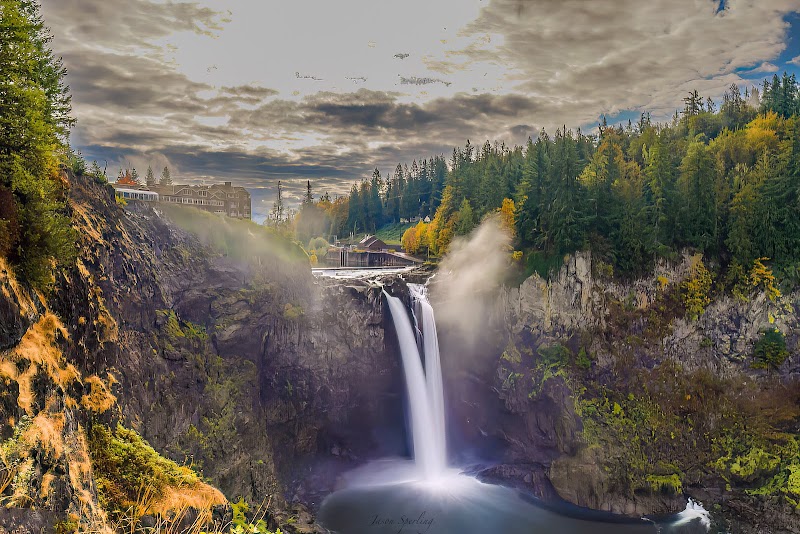
Navigating Seattle: Essential Guide to Transportation Near Seattle, Washington
Seattle’s rich transport network—from rapid buses and light rail to ferries and bike shares—makes exploring this urban hub and surrounding wilderness accessible and straightforward. Discover how to navigate the city with ease and prepare for outdoor adventures nearby.
Plan Around Peak Traffic Hours
Seattle experiences heavy traffic from 7-9 AM and 4-6 PM on I-5 and main thoroughfares. Use real-time traffic apps to adjust your schedule accordingly.
Utilize Park-and-Ride Lots
Parking near downtown is limited and costly, so consider park-and-ride facilities on the outskirts for seamless transit access.
Bring a Transit Card
Orca cards simplify fare payment across bus, light rail, and ferries, saving time and money during your trip.
Dress for Weather Variability
Seattle’s weather can shift quickly; pack water-resistant layers for comfort when moving between transportation modes.
Navigating Seattle: Essential Guide to Transportation Near Seattle, Washington
Navigating Seattle: Your Guide to Seamless Transportation Near Seattle, Washington
Seattle's dynamic urban landscape stretches from Puget Sound to the Cascade foothills, demanding a transportation system as varied as its terrain. Whether you're jetting in for a business trip, planning an outdoor escape to the Cascades, or immersed in the city’s eclectic neighborhoods, knowing how to move efficiently is key.
Getting Around Seattle hinges on a network that balances speed and accessibility. The Seattle-Tacoma International Airport connects travelers worldwide, while the city's public transit offers cost-effective ways to explore the region.
Metro Transit operates an extensive bus system, threading through urban corridors and reaching into suburban areas. Its rapid transit lines, including the Link Light Rail, provide a vital artery connecting downtown Seattle, the University District, and the airport. For quicker, flexible options, bike-share services and electric scooters populate the city, offering a brisk ride through traffic and parks alike.
If driving, Seattle’s grid of highways and arterial roads requires planning. Peak hours tighten traffic around I-5, Spokane and Aurora avenues, but real-time apps keep you informed. Park-and-ride facilities strategically position commuters for a quick transfer to trains or buses, easing congestion and stress.
For those craving serenity from urban hustle, ferries dart across Puget Sound to Bainbridge and Bremerton, delivering a scenic commute framed by water’s restless push.
Seattle's transportation system is a toolkit for every type of traveler. Understanding key transit options—buses, light rail, ferries, and bike shares—ensures your trip flows with ease. Prepare for varying terrain, weather conditions, and peak travel times to tackle the city on your terms.
SEO Keywords: Seattle transportation, Seattle public transit, Link Light Rail Seattle, Seattle bus routes, Seattle ferry system, Seattle airport transportation, bike share Seattle, parking Seattle, commuting Seattle, transportation near Seattle
Nearby Trips
All Adventures
Boat Charters
Water Activities
Adventures near Seattle, Washington
Discover the unique and memorable adventures that make Seattle, Washington special.
Frequently Asked Questions
What is the easiest way to get from Seattle-Tacoma International Airport to downtown Seattle?
The Link Light Rail connects the airport to downtown Seattle efficiently, with trains running every 6-15 minutes and a 37-minute travel time. It’s affordable and avoids traffic delays common on I-5.
Are bikes allowed on Seattle’s public transit system?
Yes, bikes are permitted on buses, light rail trains, and ferries during most hours, with designated spaces for easy transport. Check specific time restrictions during peak hours.
How reliable is the ferry service from Seattle to nearby islands?
Ferries operate regularly with schedules year-round, but rough weather or high seas in winter can cause disruptions. Always check the Washington State Ferries website for real-time updates.
Is it necessary to rent a car for exploring Seattle’s outdoor surroundings?
Not always. Public transit and shuttle services cover many trailheads and parks near Seattle, especially during peak seasons. Car rentals offer flexibility but may add to parking challenges.
What are some lesser-known public transit stops offering great views?
The Smith Cove ferry terminal offers a waterfront panorama with fewer crowds, and stations like Mount Baker Light Rail have access to nearby parks and hiking trails with seasonal blooms.
How do I avoid heavy traffic when commuting in Seattle?
Travel outside rush hours (7-9 AM, 4-6 PM) where possible, use real-time traffic apps, and opt for light rail or bike shares to bypass congested roadways.
Recommended Gear
Weatherproof Jacket
Keeps you dry during frequent rain showers common in Seattle’s spring months.
Comfortable Walking Shoes
Ideal for navigating transit hubs, urban streets, and short hikes between stops.
Orca Transit Card
Preloaded fare card speeds boarding across buses, light rail, and ferries.
Portable Phone Charger
Ensures your navigation and transit apps stay powered during long travel days.
Local Insights
Hidden Gems
- "Smith Cove ferry terminal waterfront views"
- "Mount Baker neighborhood transit-accessible parks"
- "Gas Works Park accessed via bus routes"
- "Discovery Park reachable by multiple bus lines"
Wildlife
- "Bald eagles often spotted near Elliott Bay ferry routes"
- "Harbor seals frequent Puget Sound shorelines"
- "Urban songbirds thrive along bike paths and parks"
History
"Seattle’s transit system evolved from streetcars to state-of-the-art light rail and ferry networks, reflecting the city’s growth from a logging hub to a tech and outdoor beacon."